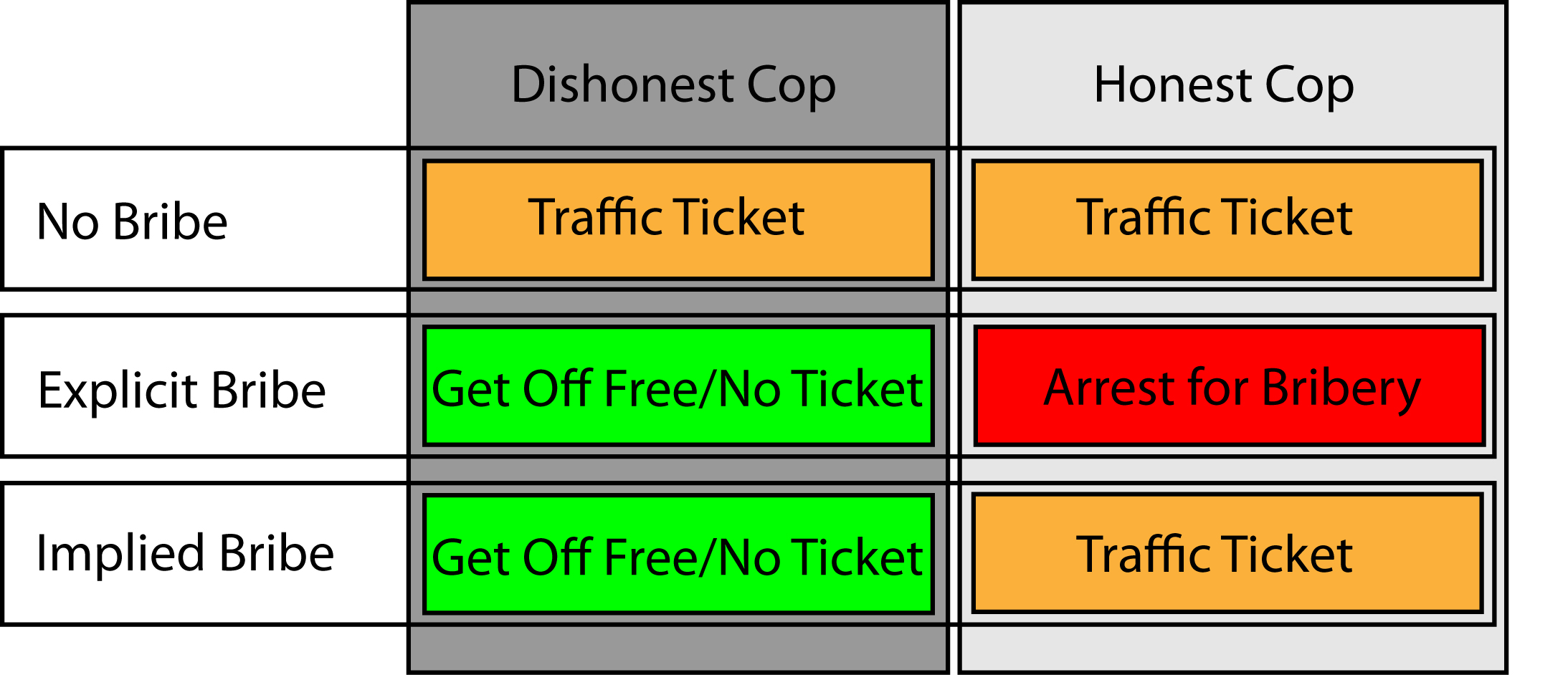
In his book “The Stuff of Thought: Language as a Window into Human Nature”, Steven Pinker gave the following defense of language ambiguity: Imagine you are stopped by a traffic cop for a violation. You would rather not get a ticket, and consider offering the cop a bribe. You have options: no bribe and definitely get the ticket; try a bribe and hopefully the cop will accept and let you go free this time. But what if the cop is an honest cop and doesn’t accept bribes? Then you just bought yourself a trip to jail for bribing an officer! That’s the worst possible outcome — a traffic ticket is better than a trip to jail AND a traffic ticket. But what if you just “sort of” offer the officer a bribe? Wave a wad of cash without actually offering it to the officer? A dishonest cop might take you up on the offer and let you go without a ticket. An honest cop could ignore the whole cash waving and write a ticket; or he could ask for clarification: “Are you trying to bribe me?” “On, no, officer. Of course not!” And you are left with a traffic ticket…

